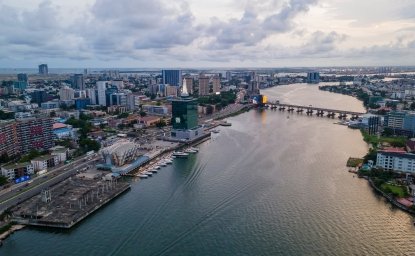The COVID-19 pandemic has had a profound impact on the economies of the Middle East and North Africa (MENA) region, compounding its structural unemployment problem and leading to an increase in poverty. The closure of schools and places of work also highlighted its digital divides, as those without reliable Internet access were unable to work or continue their education. The digital divide between men and women, already large in MENA, also grew within the last year.
Across the world, government-ordered lockdowns showed that access to the internet has become a lifeline for modern society, especially in the workforce. This lesson came amidst ongoing efforts by MENA governments to diversify their economies and reap the benefits of a digital transformation. These dual shocks elevated the urgency to reduce the influence of oil and state spending and move toward economic growth based on innovation, education, essential skills, private investment and technology. However, after decades of unsatisfactory progress, this latest crisis may become the last chance to correct course and develop a regional economy that supports job creation and a more even distribution of economic gains.
The pandemic’s economic setbacks
In its latest economic outlook, the International Monetary Fund (IMF) estimated that the MENA region’s recovery rate of 4 percent of GDP will lag behind global growth of 6 percent for 2021. Due to an economic contraction of 3.4 percent last year, the Arab States in the region, for example, lost the equivalent of 5 million full-time jobs according to the International Labor Organization (ILO). The region witnessed a sharp increase in poverty rates due to COVID-19. The World Bank estimated in January that the number of new poor at the middle-income poverty line of living on $5.50 per day increased by 13 million people in 2020 – previous estimates said this number could reach 23 million by the end of this year.
The pandemic also sharply highlighted disparities between MENA countries’ health systems and their digital infrastructure.
The pandemic also sharply highlighted disparities between MENA countries’ health systems and their digital infrastructure. Those employed by large enterprises as well as students shifted their activities online, but Internet bandwidth was not prepared for the sudden shift in peak usage. Government programs offered to offset Internet costs for poor families, but this also increased traffic and Internet speed remained low.
The state of digital infrastructure was also critical to the capacity of schools to respond to the pandemic. UNICEF declared a worldwide learning crisis due to school closures, affecting more than 110 million children in the MENA region. The World Bank estimates the effective years of education globally to fall from 7.6 years to 7.1 years. This may have an amplified effect in the region: According to a UNICEF survey, only 55 percent of children in seven MENA countries that were enrolled before the pandemic had access to some form of distance learning.
Closures did force some countries to overcome traditional resistance to online education, especially university faculties (as in the case of the Virtual University of Tunis). But it became clear that inequality within the classroom meant that some students simply would not have the resources to keep up with their peers. Many students do not have access to a computer at home and rely mostly on their phones to use the internet. Access to a household computer is also prioritized for males, preventing women from maintaining academic or professional life. Impacts on education will add challenges to digital transformation in the region which is already lagging behind in international standards set by the Program for International Student Assessment (PISA) and the Trends in International Mathematics and Science Study (TIMSS).
Opportunities in digital transformation
Though the pandemic presents a major economic setback, MENA’s digital transition has already shown much progress. While still catching up, smartphone use in MENA has increased significantly in recent years with greater phone affordability. More people are now connected to mobile Internet in the region than in South Asia and sub-Saharan Africa.
A 2018 World Bank study concluded that improving broadband access in the region had a short term positive effect on job creation. Another recent study estimated that a one percent increase in fixed broadband increased GDP by 0.08 percent and a one percent increase in mobile broadband increases GDP by 0.15 percent.
The region’s active start-up ecosystem has been a key driver of this trend; and even came out ahead last year as lockdowns forced many people to use online services for the first time.
The region’s active start-up ecosystem has been a key driver of this trend; and even came out ahead last year as lockdowns forced many people to use online services for the first time. According to data by MAGNiTT, MENA start-ups in 2020 saw a record $1 billion in investments, up 13 percent from 2019, while the number of investment deals decreased. This positive trend also continued in the first months of 2021, with start-ups raising $396 million in 125 deals in the first quarter according to Wamda, an accelerator and knowledge platform in the MENA region.
International tech giants are also getting a permanent boost thanks to the pandemic. Consumers in Saudi Arabia and the UAE were nudged toward shopping from home and intend to continue doing so after the pandemic. Residents are also buying more essentials online based on convenience and value, and are increasing their use of video conferencing and remote learning. Capitalizing on the boost in online retail, Amazon has plans to expand its logistics network in Saudi Arabia, extending its local and regional reach by building eleven new facilities and adding 1,500 employees.
Growing connectivity has opened up new opportunities, and if harnessed correctly, can complement the recovery of jobs after the pandemic. Digital transformation creates flexibility in the job market, as crowdsourcing allows for growth in the gig economy as well as freelancing. National policies in several countries have made them IT-outsourcing hubs for Western companies, which attracted Expedia.com to Jordan, for example. While regional startups alone are unable to absorb the large numbers of unemployed graduates, they play a pivotal role in creating high-quality jobs. Ultimately, these broader consumer trends show an increase in skills and digital citizenship in the region.
Challenges to digital transformation
Whatever growth to digital transformation we can attribute to the pandemic, its economic damage could also derail progress. Firstly, the loss of jobs from a region that is already struggling with acute unemployment will augment suffering and may slow the spread of connectivity. Furthermore, the IMF has warned of a credit crisis that might follow. Governments borrowed heavily from domestic banks to finance relief measures. Overexposure to government debt may crowd out financing that the private sector needs to recover and capitalize on the expansion of digital consumption.
Much of the region’s digital infrastructure is also in need of upgrading. Fixed broadband penetration varies significantly between MENA countries, with a whole range of countries with little or no fiber-to-home connections. As noted earlier, the pandemic exposed the weakness of internet infrastructure: There remains a gap between the availability of mobile broadband and user uptake – slower in weaker economies like Iraq, but higher in the Gulf. The cost of mobile voice and data packages have not met the affordability target set by the UN’s Broadband Commission in many areas, leaving millions of families out of the digital economy.
The gender gap in internet access has increased over the past decade, which is particularly concerning as the pandemic has forced disproportionately more women out of the workforce and increased the burden of unpaid work duties.
Many of MENA’s other challenges to digital transformation are structural and lasting. Firstly, the process has been heavily centered in the region’s cities and there remains a significant rural-urban gap when it comes to digital infrastructure and mobile Internet use. This further entrenches inequalities between cities and rural areas, including access to job opportunities and high-quality education. The gender gap in Internet access has increased over the past decade, which is particularly concerning as the pandemic has forced disproportionately more women out of the workforce and increased the burden of unpaid work duties.
Lastly, bureaucracy remains a key hurdle in many countries, especially concerning cross-border trade and the lack of regional regulatory alignment. Another challenge is that many governments view digitization through the prism of control and surveillance. This led several countries to restrict Voice over Internet Protocol (VoIP) services (e.g. Skype and Zoom), only loosening their grip due to economic necessity during the pandemic. This rise in digital authoritarianism stifles innovation as it restricts the free flow of information, putting politics ahead of economic development and jobs, which the region desperately needs.
Seizing the digital future
The COVID-19 pandemic presents a puzzling challenge tangled with an opportunity. First, companies can capitalize on the boost in online consumption and internet services. Second, governments can complement the process by formalizing affordability packages that bring people online, amplifying the trend of spreading connectivity and encouraging investments that lower the digital divide and benefit the region’s already thriving startups.
However, governments will also need to take proactive steps to address structural challenges. They must release their grip on VoIP and increase internet provider competition. They will also need to extend credit to the recovering private sector while adding additional incentives toward digitization in companies and the recovery of jobs.
Further, the region needs to turn the page on education and bring schools into the digital economy.
Further, the region needs to turn the page on education and bring schools into the digital economy. As the director of PISA noted, Arab students “are quite good at repeating what they’ve learned but not at participating in tasks that require students to think creatively.” Educators must balance the need to integrate technology with pedagogical approaches centered on independent and critical thinking. The private sector should also work more closely with educators to develop training modules for technologies that can be disseminated to schools through donor-funded initiatives.
To bolster the region’s growing digital economy, governments should work more closely with national stakeholders, the local private sector, and international organizations to realign regulations at the regional level to make it easier for companies to conduct business across multiple countries. Furthermore, standardizing credentials and qualifications frameworks coupled with labor mobility policies will allow tech-savvy workers to move with the digital infrastructure and contribute to growth and connectivity.
MENA governments can and should use the momentum created by the COVID-19 pandemic to jumpstart digital transformation and tear down the digital divide. Without that, recovery will remain slow, and the region will linger in a low-growth, no-innovation cycle for years to come.
The views expressed in these articles are those of the authors and do not reflect an official position of the Wilson Center.
Authors



Middle East Program
The Wilson Center’s Middle East Program serves as a crucial resource for the policymaking community and beyond, providing analyses and research that helps inform US foreign policymaking, stimulates public debate, and expands knowledge about issues in the wider Middle East and North Africa (MENA) region. Read more


The MENA Workforce Development Initiative
The Middle East and North Africa Workforce Development Initiative (MENA-WDI) aims to assess both current and projected challenges facing the region in developing the workforce and the implications for peace and stability. Read more

Explore More
Browse Insights & Analysis
Understanding Trade Promotion Authority (TPA): Implications for US Trade

The Innovative Landscape of African Sovereign Wealth Funds


